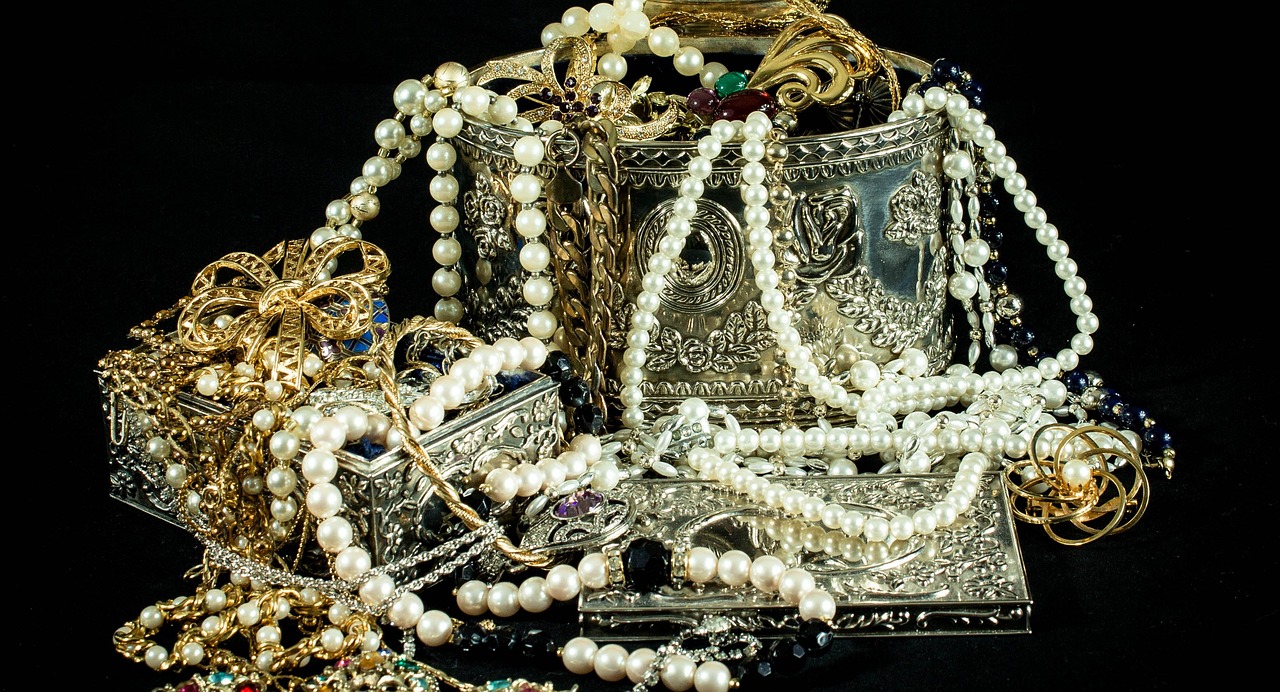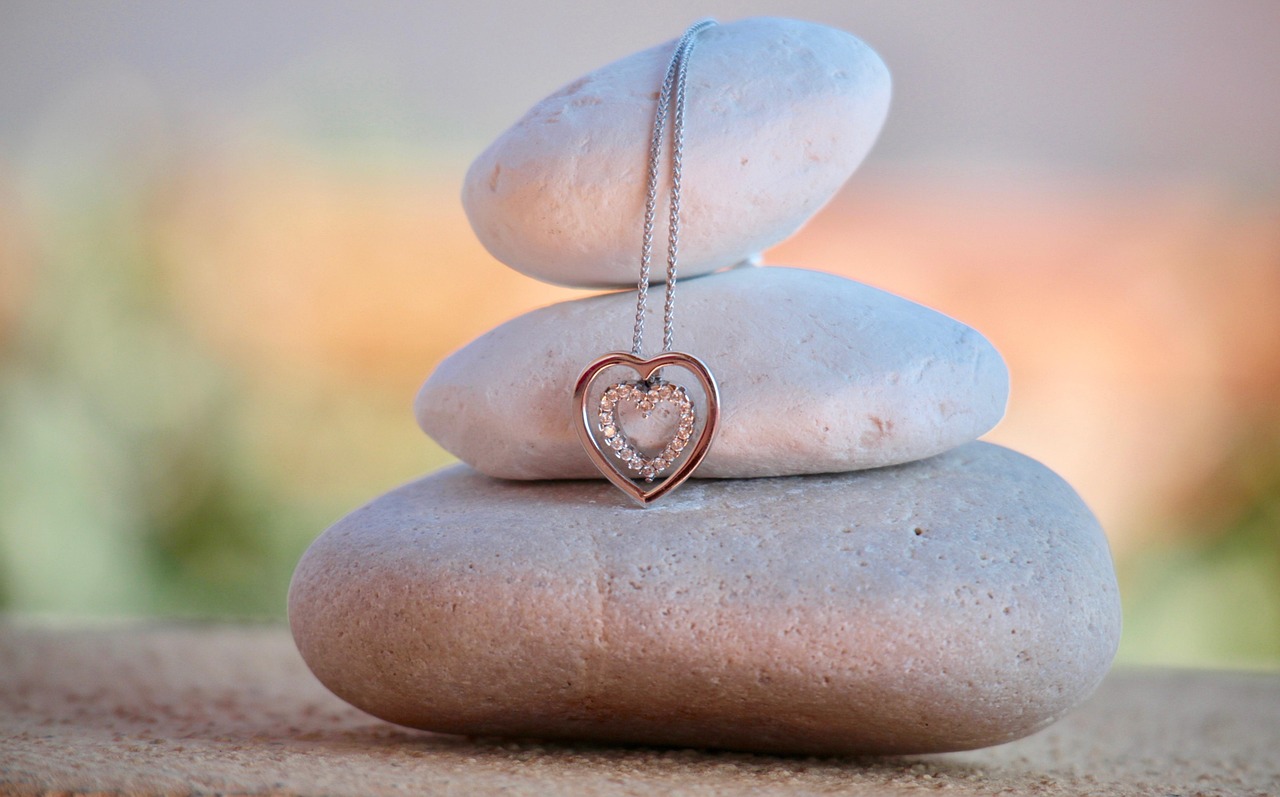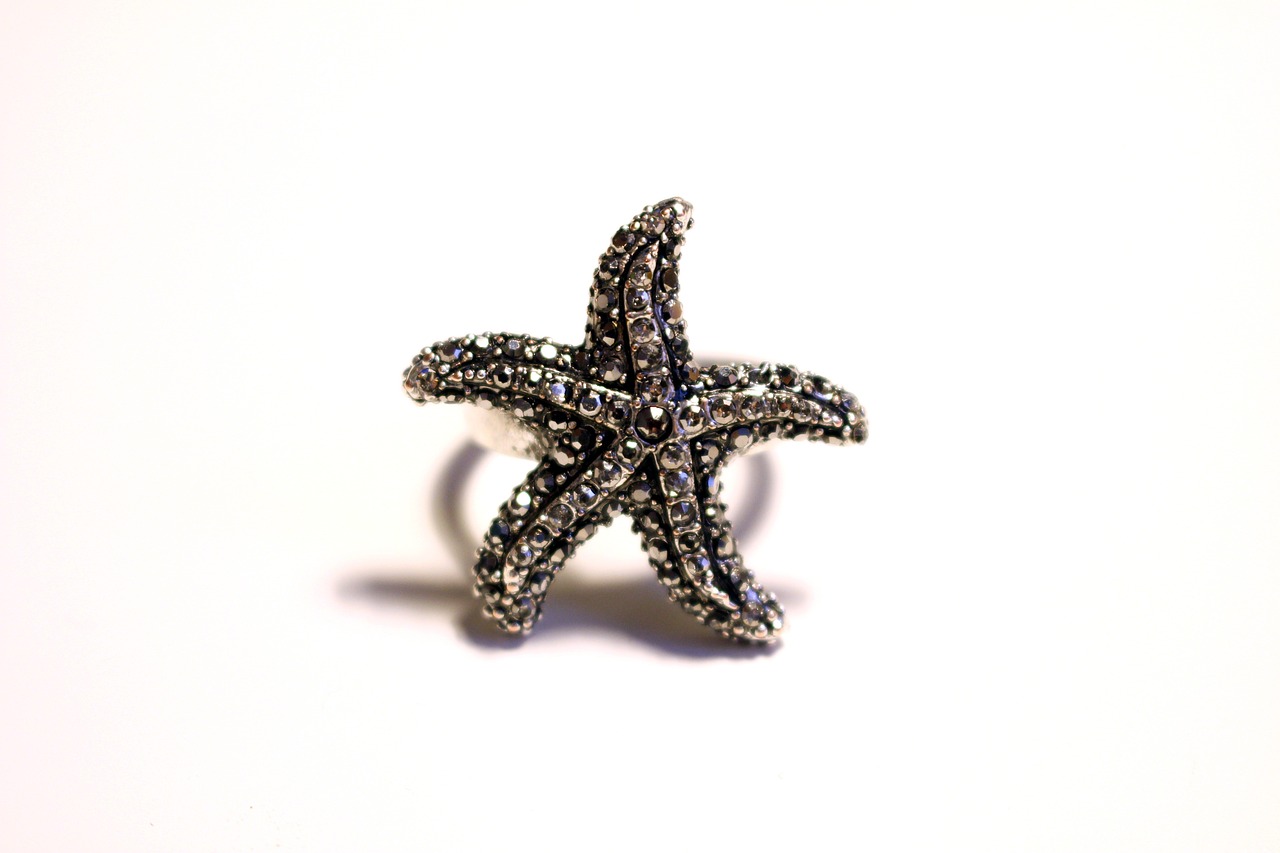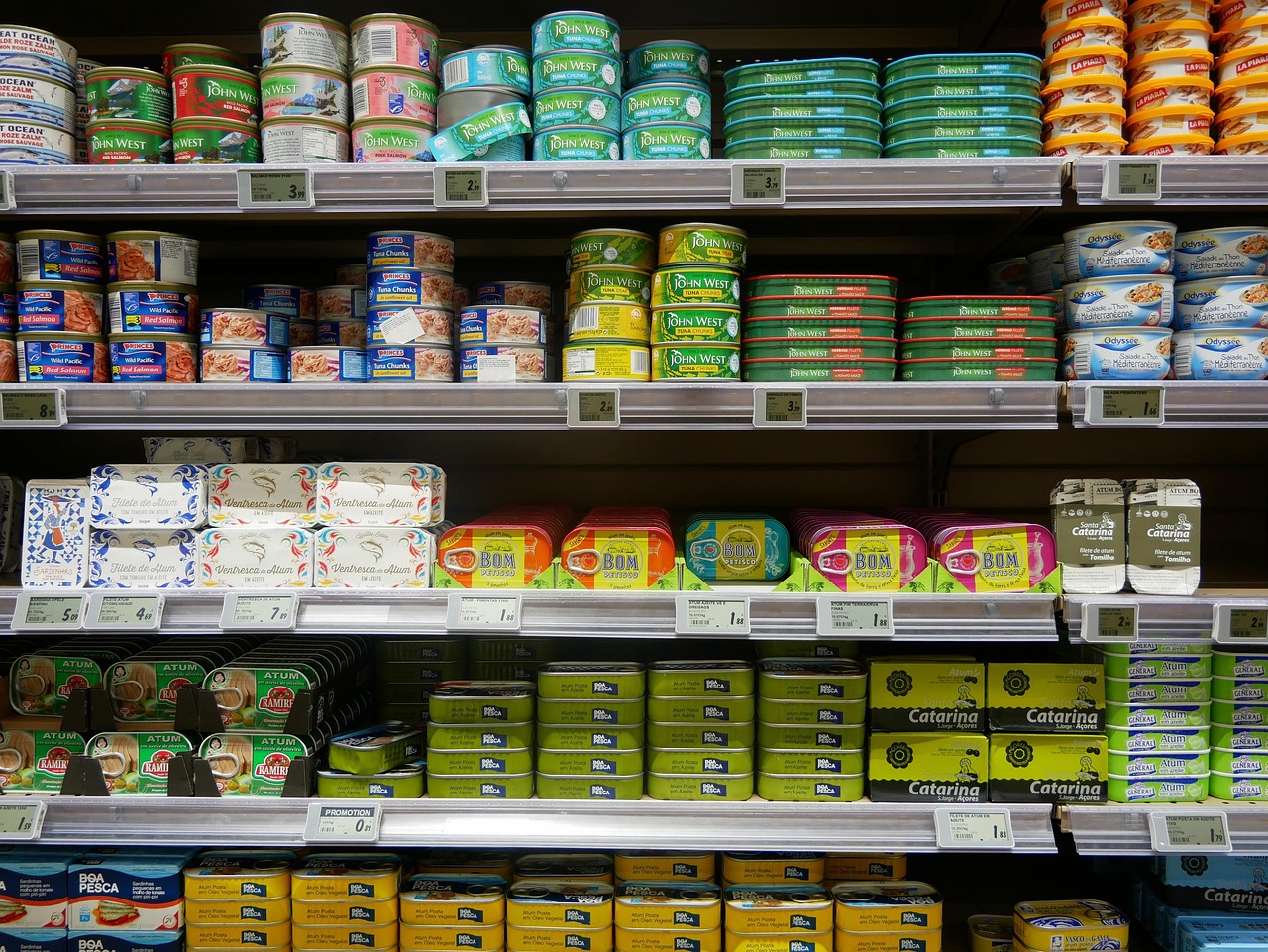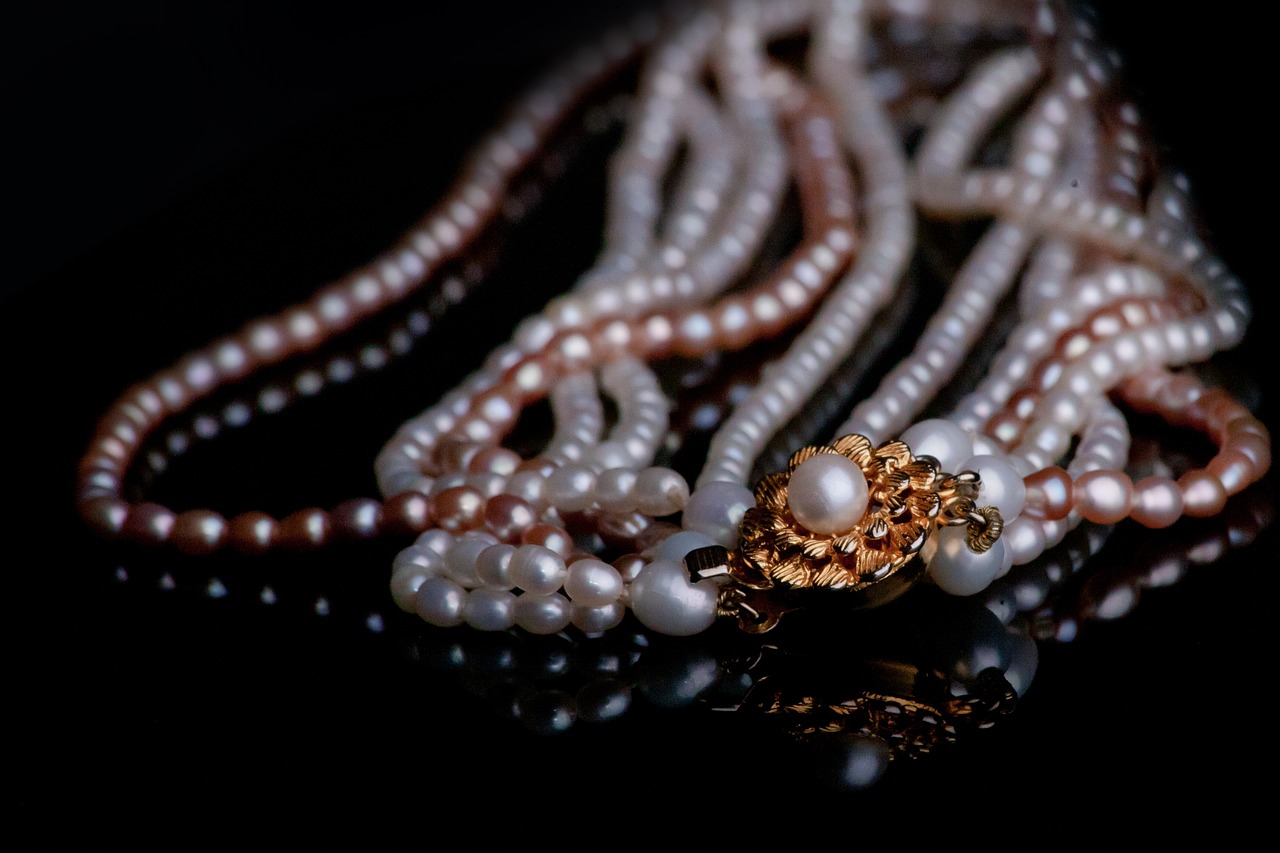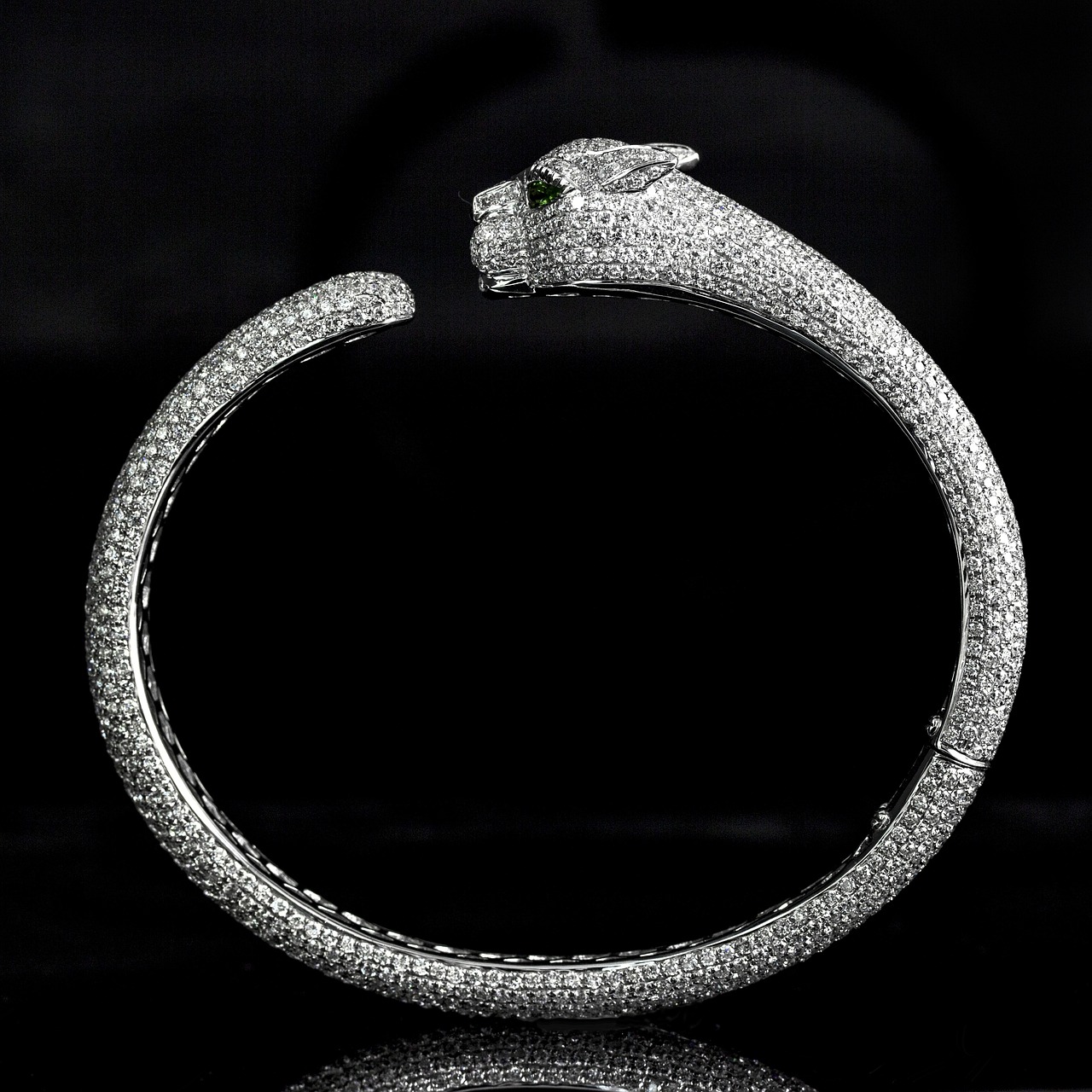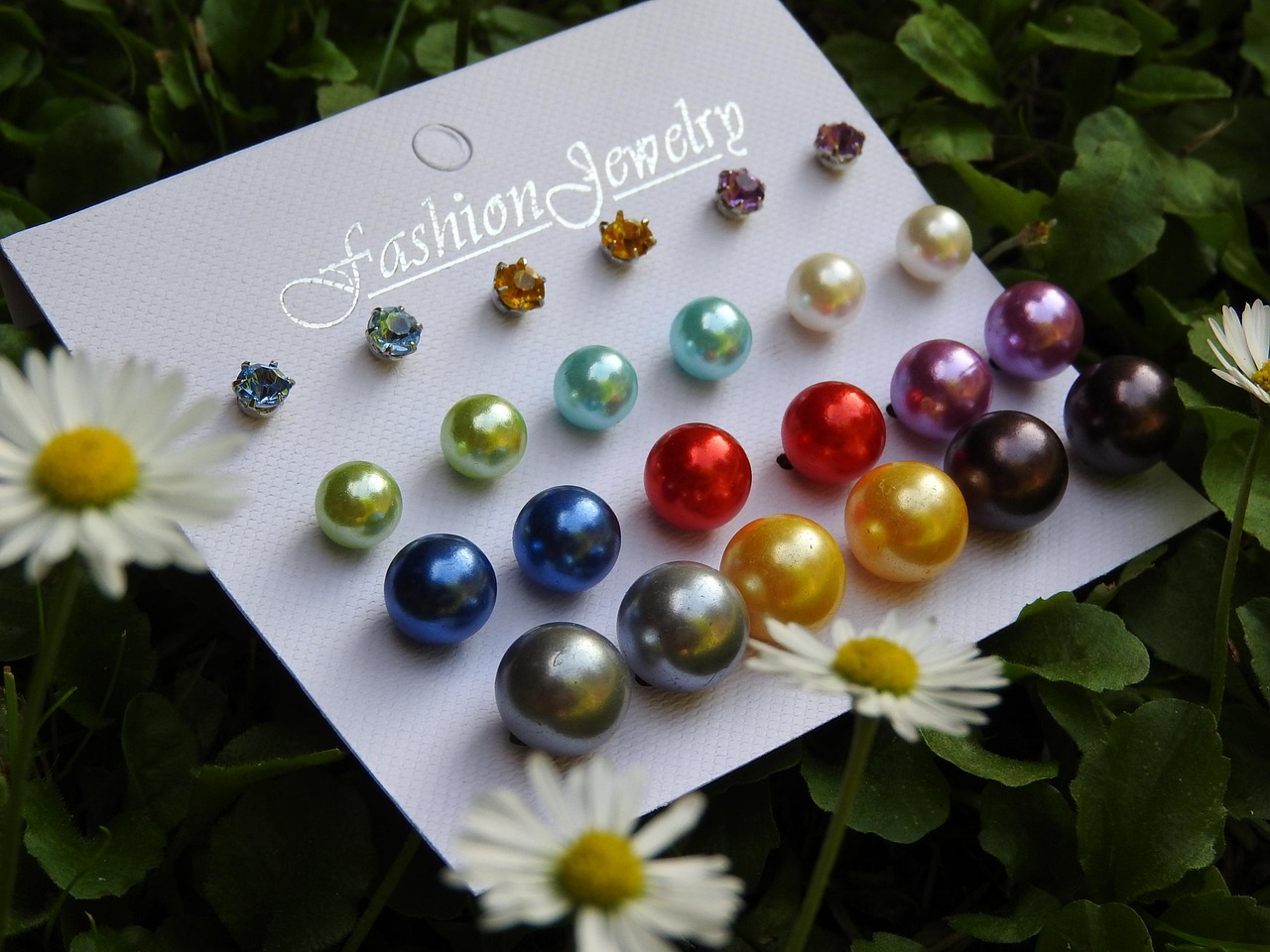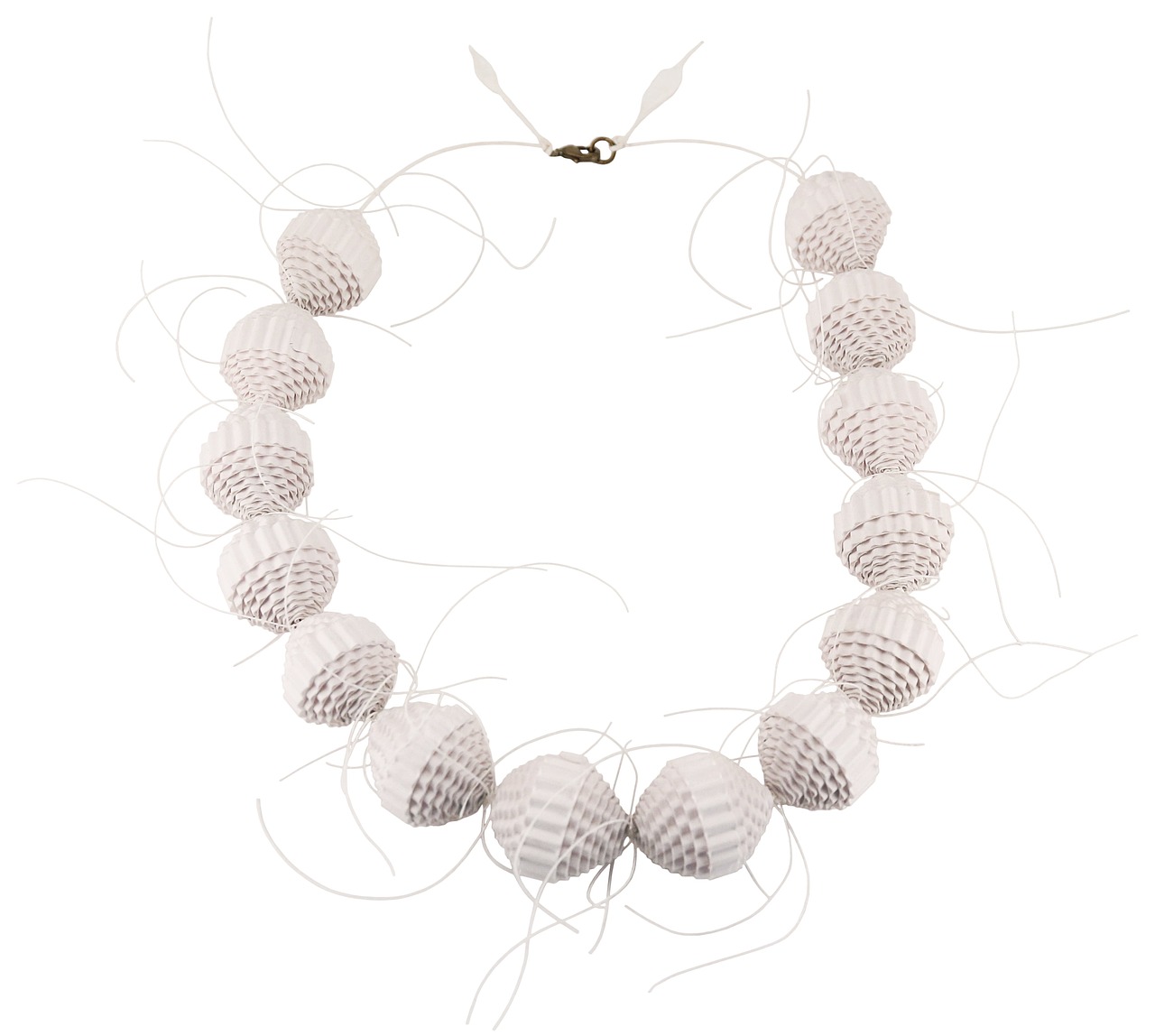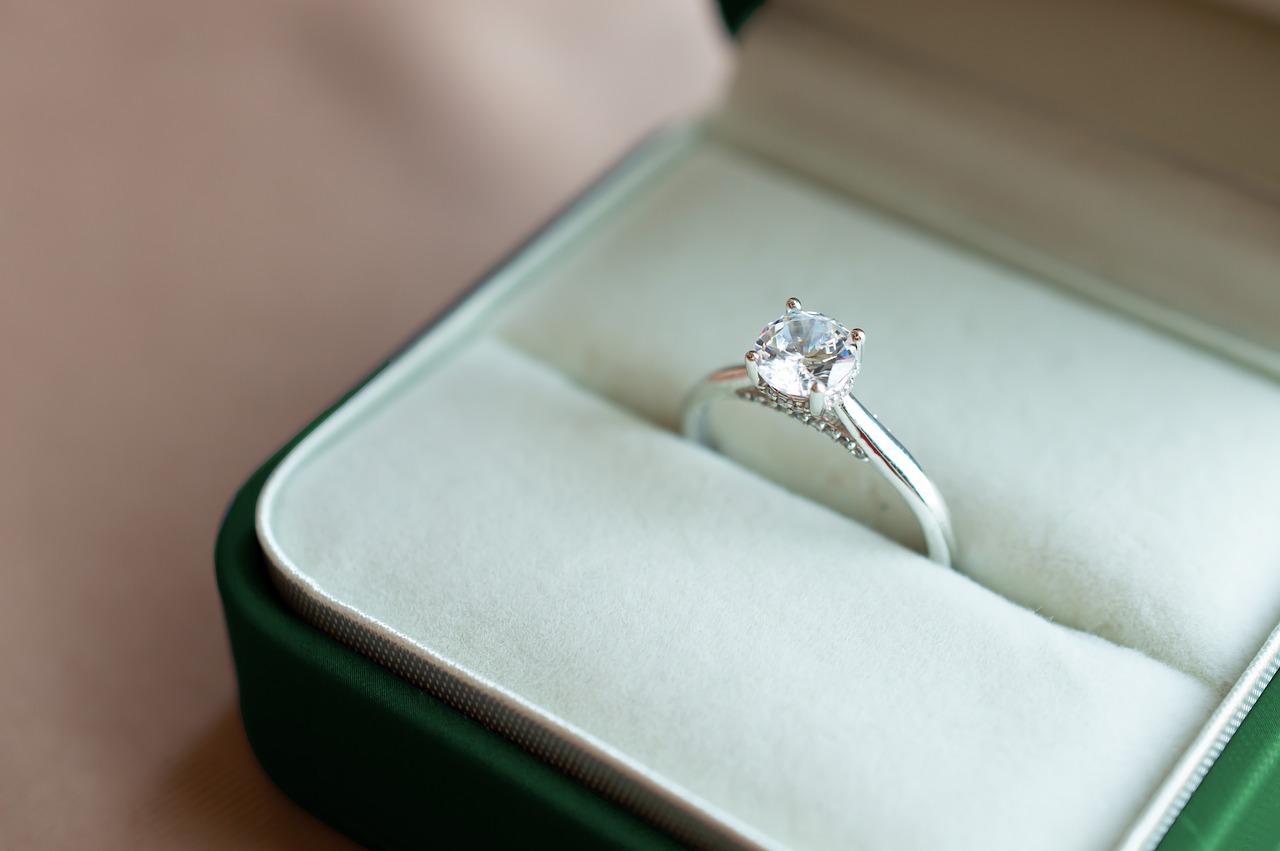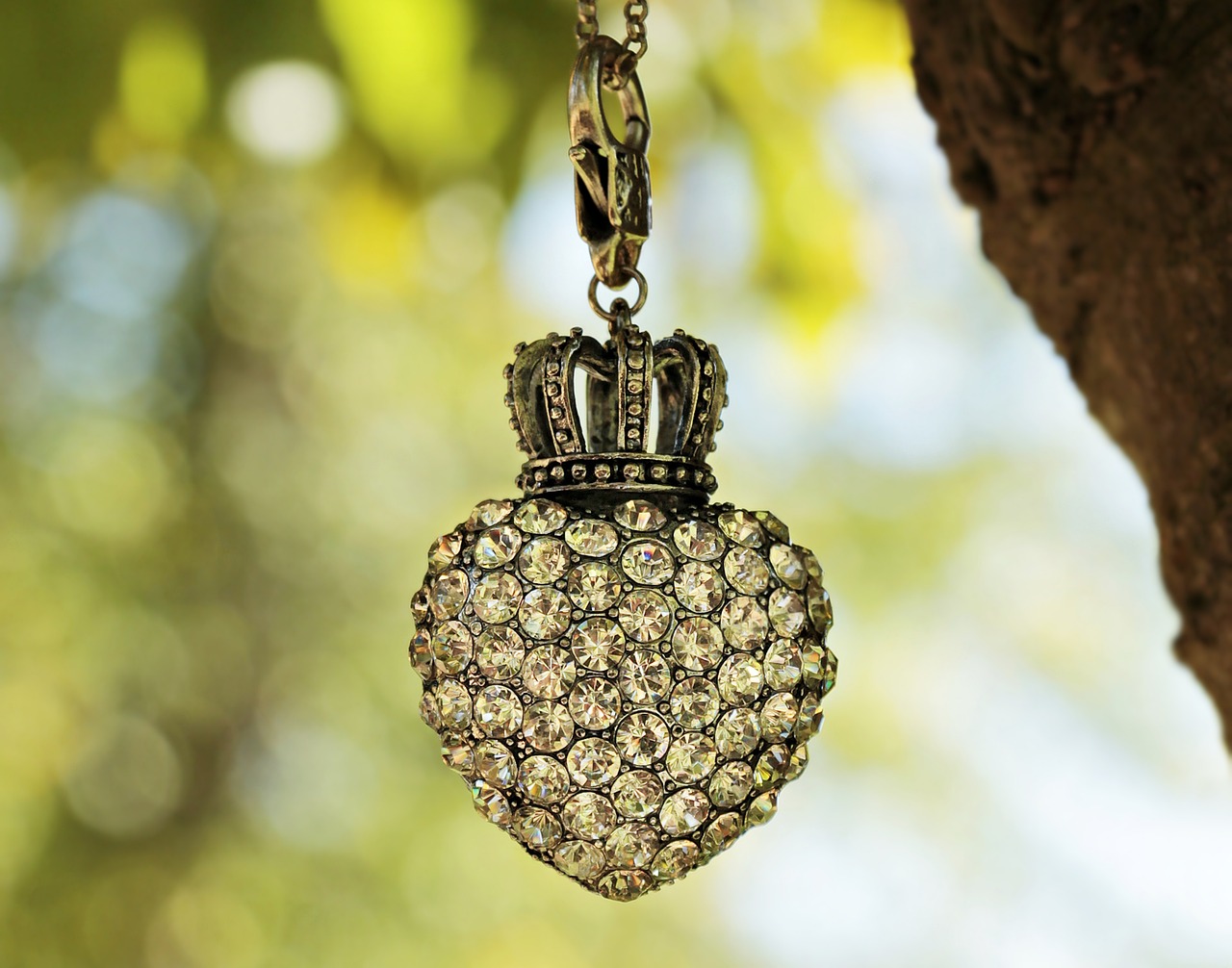Investing in jewelry can be an exciting and rewarding venture for those looking to diversify their portfolios. This guide aims to provide essential insights into the world of jewelry investment, focusing on how to identify valuable pieces, understand current market trends, and make informed decisions that could lead to profitable outcomes.
Jewelry serves not only as a form of personal expression but also as a potential financial asset. The intrinsic value of jewelry often appreciates over time, especially for pieces that are rare or crafted by renowned designers. Understanding the factors that contribute to a piece’s value is crucial for anyone considering this investment route.
Not all jewelry pieces are created equal. Some categories are more likely to retain or increase their value:
- Vintage and Antique Jewelry: These pieces often carry historical significance and craftsmanship that can enhance their value.
- Designer Jewelry: Items from well-known designers usually command higher prices and are sought after by collectors.
- Jewelry with Precious Stones: Pieces featuring diamonds, sapphires, rubies, and emeralds often appreciate due to their rarity and demand.
The foundation of many valuable jewelry pieces lies in the precious metals used. Gold, silver, and platinum are the most common:
- Gold Jewelry: Its enduring value and liquidity make it a staple for investors.
- Silver and Platinum: These metals also offer unique investment opportunities, particularly in specific designs.
Gemstones significantly enhance the value of jewelry. To make sound investments, it is essential to understand the following:
- Gemstone Quality: Factors such as cut, clarity, color, and carat weight determine a gemstone’s worth.
- Market Demand: Popularity and trends can affect the resale value of gemstones.
Ensuring the authenticity of jewelry is paramount to protecting your investment. Here are some tips:
- Certification: Look for pieces that come with certification from reputable gemological laboratories.
- Recognizing Counterfeits: Familiarize yourself with common signs of fake jewelry to avoid costly mistakes.
Knowing where to purchase jewelry can significantly impact your investment outcomes:
- Reputable Jewelers: Buying from established jewelers provides assurance of quality and authenticity.
- Online Marketplaces: While they offer a broader selection, buyers must exercise caution and conduct thorough research.
- Auctions: Auction houses can yield unique pieces but come with risks; understanding the auction process is crucial.
Staying informed about market trends can help you make timely investment decisions. Key factors include:
- Seasonal Trends: Jewelry trends often shift with the seasons, affecting demand.
- Global Economic Conditions: Economic factors can influence market stability and investment risks.
Proper care and maintenance are essential for preserving the value of your jewelry. Consider the following:
- Storage Solutions: Use appropriate storage to prevent damage and maintain the integrity of your pieces.
- Cleaning and Maintenance: Regularly clean your jewelry to enhance its appearance and longevity.
By following these guidelines, you can navigate the jewelry investment landscape with confidence and make informed decisions that align with your financial goals.
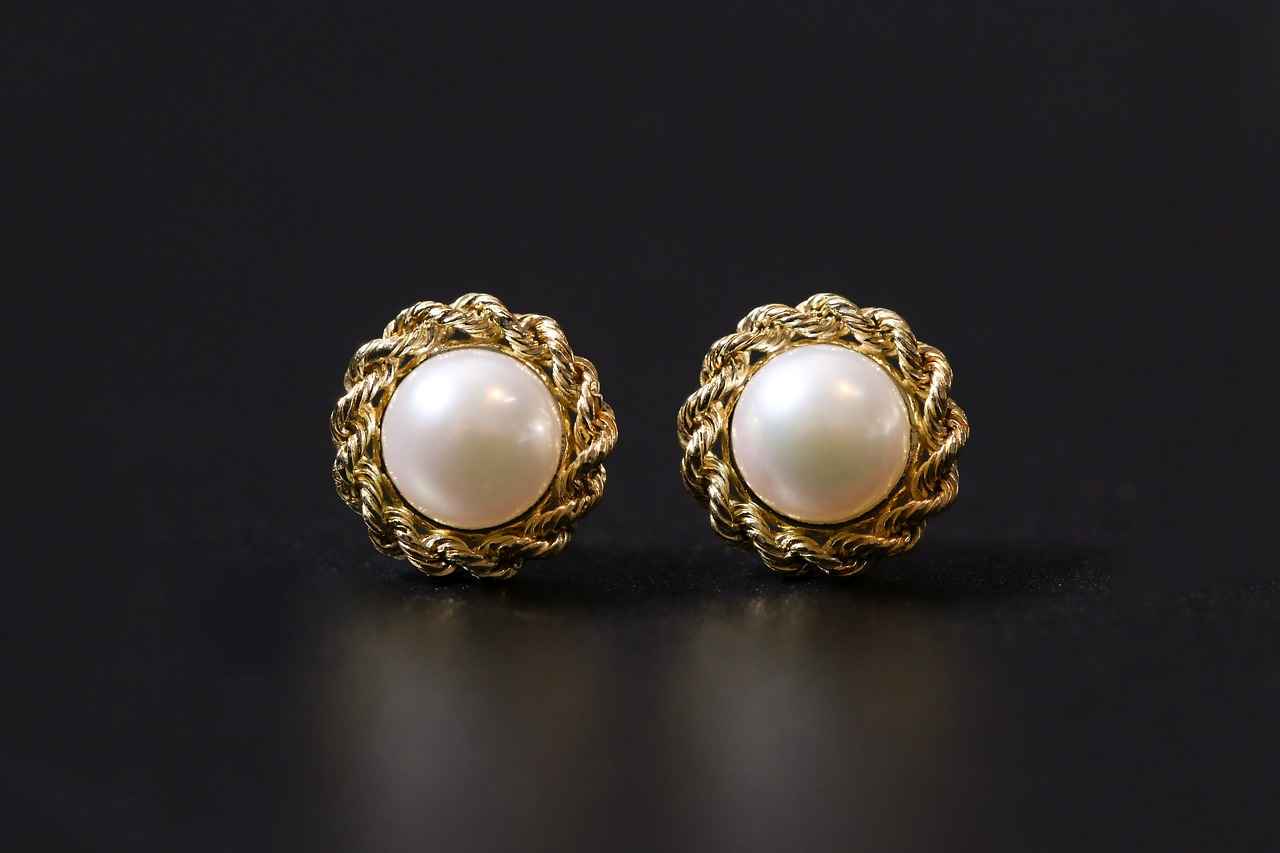
Why Invest in Jewelry?
Investing in jewelry is not merely about acquiring beautiful pieces; it is a strategic decision that can yield significant financial returns. As a tangible asset, jewelry has the potential to appreciate in value over time, making it an attractive option for investors seeking to diversify their portfolios. However, understanding the intricacies of the jewelry market is essential for making informed choices.
Investing in jewelry can be a lucrative venture, combining beauty with potential financial return. Understanding its value and market demand is crucial for making informed investment choices. The allure of jewelry lies not only in its aesthetic appeal but also in its historical significance and cultural value. Here are some compelling reasons to consider jewelry as an investment:
- Intrinsic Value: Jewelry made from precious metals and gemstones holds intrinsic value that can withstand economic fluctuations.
- Market Demand: Certain pieces, especially vintage or designer items, can experience increased demand, leading to higher resale values.
- Emotional Appeal: Beyond financial considerations, jewelry often carries sentimental value, making it a cherished asset.
- Hedge Against Inflation: As a tangible asset, jewelry can serve as a hedge against inflation, retaining value even when currency depreciates.
Not all jewelry is created equal. Certain types, such as vintage pieces, designer items, and those adorned with precious stones, tend to hold or increase in value over time. Understanding which categories to focus on can significantly impact your investment success.
- Vintage and Antique Jewelry: Items that are over 100 years old often have a unique charm and can be highly sought after.
- Designer Jewelry: Pieces from renowned designers often retain their value due to brand prestige.
- Gemstone Jewelry: High-quality gemstones can greatly enhance the value of a piece, making them a wise investment.
Precious metals like gold, silver, and platinum are often the foundation of valuable jewelry. Their market prices fluctuate, impacting the overall investment value of the pieces. For instance, gold jewelry remains a popular investment choice due to its enduring value and liquidity, making it a staple for new investors looking to enter the jewelry market.
Authenticity is crucial in the jewelry market. Knowing how to authenticate pieces can protect your investment and ensure you are purchasing genuine items. Obtaining certification from reputable gemological laboratories can provide assurance of a piece’s quality and authenticity, adding to its investment potential. Additionally, being able to identify counterfeit items is essential; familiarizing yourself with common signs of fake jewelry can save you from costly mistakes.
Staying informed about market trends can help you make timely investment decisions. Factors influencing jewelry trends include fashion, economic conditions, and cultural shifts. Jewelry trends often change with the seasons, and being aware of these shifts can help you anticipate demand and make more strategic investment choices.
Proper care and maintenance can preserve the value of your jewelry investments. Knowing how to store and clean your pieces is essential for longevity. Storing jewelry correctly can prevent damage and maintain its value, while regular cleaning can enhance the appearance and longevity of your pieces. Simple practices can make a significant difference in preserving your investments.
In conclusion, investing in jewelry offers a unique blend of beauty and potential financial gain. By understanding the market, recognizing valuable pieces, and maintaining your investments, you can navigate this fascinating world effectively.
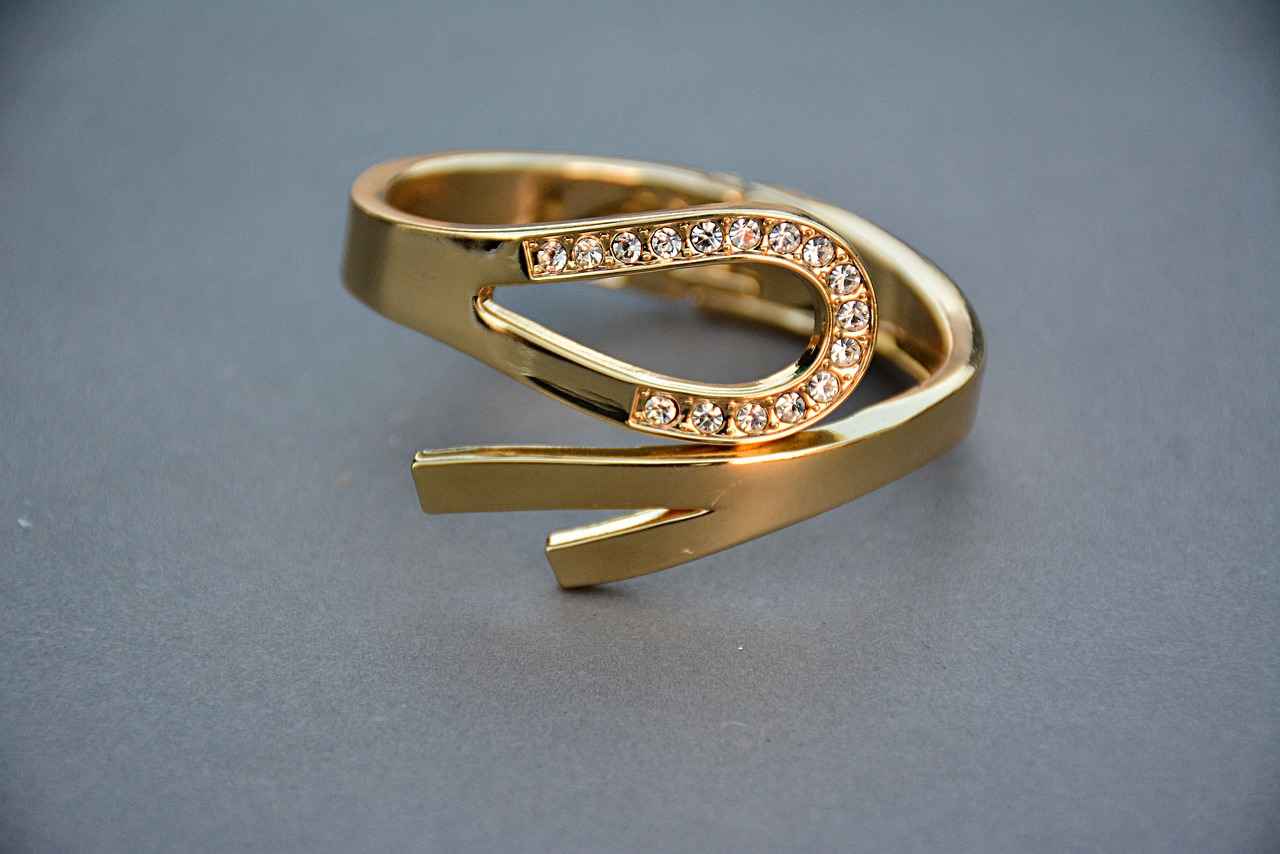
What Types of Jewelry Are Worth Investing In?
When considering investments, jewelry often emerges as a captivating option. However, not all pieces are created equal. Understanding which types of jewelry hold value over time is essential for any potential investor.
Investing in jewelry requires a discerning eye. Certain categories are known to appreciate in value, making them more suitable for investment. Here are some of the key types to consider:
- Vintage Jewelry: Vintage pieces, particularly those from renowned eras like the Art Deco or Victorian periods, often carry a unique charm and historical significance. Their rarity can drive demand, leading to increased value over time.
- Designer Items: Jewelry created by famous designers or luxury brands tends to maintain or even grow in value. Items from brands like Cartier, Tiffany & Co., and Van Cleef & Arpels are not just accessories but also status symbols that appreciate due to their craftsmanship and brand prestige.
- Jewelry with Precious Stones: Pieces featuring precious stones such as diamonds, rubies, sapphires, and emeralds are often valued for their intrinsic qualities. The rarity, cut, clarity, and carat weight of these stones can significantly impact the overall value of the jewelry.
- Antique Jewelry: Similar to vintage pieces, antique jewelry is typically over 100 years old and carries a story. The craftsmanship and historical context can make these pieces highly sought after, thus enhancing their investment potential.
- Custom-Made Jewelry: Unique, custom-designed pieces can also be valuable. The personalization aspect adds to their appeal, especially if crafted by skilled artisans. Such pieces often reflect individual taste and can be seen as one-of-a-kind investments.
While considering these types of jewelry, it’s essential to conduct thorough research and understand the market dynamics. Factors such as current trends, economic conditions, and cultural shifts can influence the value of jewelry. For instance, the increasing popularity of sustainable and ethically sourced materials has made eco-friendly jewelry a rising star in the investment world.
In addition to the type of jewelry, the condition plays a crucial role in determining value. Well-maintained pieces, preferably with original packaging and documentation, are more likely to appreciate. Investors should also be aware of the importance of authenticity. Obtaining certificates from reputable gemological laboratories can provide assurance of a piece’s quality, adding to its investment potential.
In summary, while not all jewelry is equal, understanding the nuances between different types can guide investors toward making informed decisions. By focusing on vintage pieces, designer items, and jewelry with precious stones, investors can build a collection that not only delights the eye but also serves as a profitable investment.
Understanding Precious Metals
When it comes to investing in jewelry, understanding the role of precious metals is paramount. These metals, including gold, silver, and platinum, serve as the backbone of many exquisite pieces. Their intrinsic value and market demand not only enhance the aesthetic appeal of jewelry but also significantly influence its investment potential.
The value of jewelry is often tied to the precious metals used in its creation. As market prices for these metals fluctuate due to various factors, including economic conditions and supply-demand dynamics, the overall investment value of jewelry can also change. For example, when the price of gold rises, so does the value of gold jewelry, making it a lucrative option for investors.
Understanding the market trends of precious metals is crucial for any investor. Prices can vary based on:
- Global Economic Conditions: Economic stability or instability can lead to increased or decreased demand for precious metals.
- Geopolitical Events: Conflicts or political unrest in major mining countries can disrupt supply chains, affecting prices.
- Consumer Demand: Trends in fashion and consumer preferences can significantly influence the demand for specific types of jewelry.
Gold has long been considered a safe-haven asset. Its durability and liquidity make it an attractive investment choice. Unlike other assets, gold jewelry can be easily sold or traded, providing investors with flexibility. Moreover, the allure of gold jewelry often increases during economic downturns, as people seek to invest in tangible assets.
While gold is often the star of the show, silver and platinum also present unique investment opportunities. Silver, with its industrial uses and growing popularity in jewelry, can be a cost-effective option for new investors. Meanwhile, platinum, known for its rarity, can command higher prices, especially in high-end jewelry pieces. Understanding the specific market for these metals can enhance an investor’s portfolio.
Investors should be aware of how to assess the quality of precious metals in jewelry. Key factors include:
- Purity Levels: Gold is measured in karats (with 24k being pure gold), while silver and platinum are often measured in percentage purity.
- Craftsmanship: Well-crafted jewelry not only looks appealing but also retains its value over time.
- Brand Reputation: Items from reputable brands or designers often carry a premium due to their established credibility.
Staying informed about market trends is essential for successful investment in precious metals. Factors such as seasonal trends, economic conditions, and cultural shifts can influence the demand and pricing of jewelry. For instance, certain styles may become popular during specific seasons, leading to increased demand and higher prices.
Investors should conduct thorough research and consider consulting with jewelry experts or financial advisors. Understanding the market landscape, including current trends and historical data, can help in making informed decisions. Additionally, attending jewelry shows or auctions can provide insights into emerging trends and valuable pieces.
In conclusion, investing in jewelry that incorporates precious metals can be a rewarding venture when approached with knowledge and strategy. By understanding the importance of these metals, their market dynamics, and the quality indicators, investors can navigate the jewelry market more effectively.
Gold Jewelry: A Timeless Investment
Gold jewelry has long been revered not only for its beauty but also for its enduring value as an investment. As the world evolves, the appeal of gold remains constant, making it an attractive option for both seasoned investors and those just starting in the jewelry market. In this section, we will explore why gold jewelry is considered a timeless investment and what factors contribute to its lasting popularity.
Gold jewelry is often seen as a safe haven asset, especially during times of economic uncertainty. Here are some reasons why investing in gold jewelry can be a wise choice:
- Intrinsic Value: Unlike other forms of jewelry, gold has a tangible value based on its weight and purity, making it easier to assess its worth.
- Liquidity: Gold can be easily bought and sold, providing investors with the flexibility to liquidate their assets when needed.
- Hedge Against Inflation: Historically, gold has maintained its value over time, making it an effective hedge against inflation.
The price of gold jewelry is influenced by various factors, including market demand, global economic conditions, and geopolitical events. Investors should keep a close eye on:
- Market Trends: Following trends in gold prices can help investors make informed decisions about when to buy or sell.
- Global Economic Indicators: Economic stability in major countries can impact gold prices significantly.
- Cultural Significance: Gold jewelry often holds cultural value, which can drive demand in specific regions.
While stocks and real estate are popular investment choices, gold jewelry offers unique advantages:
- Emotional Value: Gold jewelry often carries sentimental value, making it more than just a financial investment.
- Portability: Gold jewelry is easy to carry and store compared to larger investments like real estate.
- Artistic Appeal: The craftsmanship involved in creating gold jewelry can enhance its value beyond just the metal itself.
For those considering entering the gold jewelry market, here are some practical tips:
- Research Reputable Jewelers: Look for established jewelers with a good reputation to ensure quality and authenticity.
- Understand Gold Purity: Familiarize yourself with the different karats of gold, as this affects value.
- Consider Certification: Purchasing certified pieces can provide assurance of quality and authenticity.
Proper care is essential to preserve the value of your gold jewelry. Here are some maintenance tips:
- Regular Cleaning: Clean your gold jewelry regularly to maintain its luster.
- Safe Storage: Store your pieces in a cool, dry place to prevent damage.
- Insurance: Consider insuring valuable pieces to protect against loss or theft.
In summary, investing in gold jewelry remains a popular choice due to its enduring value, liquidity, and emotional significance. By understanding the market dynamics and taking proper care of your investments, you can make informed decisions that may yield profitable returns in the long run.
Silver and Platinum: Lesser-Known Options
Silver and platinum are often overshadowed by gold in the world of jewelry investment. However, these precious metals present unique opportunities for savvy investors who are willing to look beyond the glimmer of gold. Understanding the value of silver and platinum, particularly in the context of design and craftsmanship, can lead to lucrative returns.
Investing in silver and platinum can be particularly advantageous due to their industrial uses and increasing demand. For instance, silver is widely used in electronics and solar panels, while platinum is essential in the automotive industry for catalytic converters. These applications contribute to their market value, making them more than just aesthetic choices.
- Affordability: Silver jewelry is generally more affordable than gold, making it accessible for new investors.
- Variety of Designs: Silver can be crafted into intricate designs, appealing to a broad range of tastes.
- Market Demand: With the rise of eco-friendly products, silver’s industrial applications are gaining traction, potentially increasing its value.
Platinum is often considered the elite metal in jewelry, known for its durability and rarity. Here are some reasons to consider platinum for investment:
- Rarity: Platinum is much rarer than gold, making it a sought-after metal among collectors.
- Durability: Its resistance to tarnish and wear makes platinum jewelry an excellent long-term investment.
- Luxury Market: Platinum is often used in high-end jewelry, appealing to affluent buyers and collectors.
When investing in silver and platinum, consider the following strategies:
- Focus on Craftsmanship: Look for pieces that showcase exceptional artistry and design, as these tend to retain value better.
- Seek Out Limited Editions: Limited edition pieces or those from renowned designers can appreciate significantly over time.
- Monitor Market Trends: Stay informed about market conditions and demand for silver and platinum to make timely investment decisions.
Understanding how to evaluate the worth of silver and platinum jewelry is essential:
- Know the Purity: Check for stamps indicating the metal’s purity, such as 925 for sterling silver or 950 for platinum.
- Consider the Design: Unique or intricate designs can significantly enhance a piece’s value.
- Appraisals: Obtain professional appraisals to accurately gauge the worth of your jewelry investments.
In conclusion, while gold may be the traditional choice for jewelry investment, silver and platinum offer compelling alternatives that should not be overlooked. By understanding their unique characteristics, market demand, and investment strategies, you can diversify your jewelry portfolio and potentially achieve impressive returns.
Evaluating Gemstones for Investment
Investing in gemstones can be a rewarding endeavor, especially when you understand the factors that influence their value. Gemstones are not just beautiful; they can also appreciate significantly over time, making them a desirable addition to any investment portfolio. To maximize your investment potential, it is crucial to evaluate gemstones thoroughly before making a purchase.
The value of a gemstone is determined by several key characteristics, often referred to as the Four Cs: color, clarity, cut, and carat weight. Understanding these factors can help you make informed decisions when investing in gemstones.
- Color: The most significant factor in a gemstone’s value. Vibrant, rich colors are usually more sought after. For example, a deep blue sapphire is generally more valuable than a light blue one.
- Clarity: This refers to the presence of inclusions or blemishes. The fewer the inclusions, the higher the value. A flawless gemstone is rare and highly prized.
- Cut: The quality of the cut affects how well a gemstone reflects light. A well-cut gemstone will have better brilliance and sparkle, enhancing its overall appeal.
- Carat Weight: Larger gemstones are typically more valuable, but not always. The rarity of the stone can also play a significant role in its price.
When investing in gemstones, obtaining a certificate from a reputable gemological laboratory is essential. A certificate provides a professional assessment of the gemstone’s characteristics, ensuring that you are making a sound investment. Look for certifications from recognized institutions such as the Gemological Institute of America (GIA) or the American Gem Society (AGS).
Understanding current market trends can significantly impact your investment strategy. For instance, certain gemstones may gain popularity due to fashion trends or cultural shifts, affecting their market value. Emeralds, for example, have seen a resurgence in demand thanks to their vibrant color and association with luxury.
Investors must be vigilant to avoid counterfeit gemstones. Familiarizing yourself with common signs of imitation can save you from costly mistakes. Here are a few tips:
- Check for inclusions: Real gemstones often have natural inclusions, while synthetic stones may appear flawless.
- Conduct a refractive index test: This can help determine whether a stone is genuine or synthetic.
- Use a magnifying glass: Inspect the stone closely for signs of wear or bubbles, which can indicate a fake.
Choosing the right place to purchase gemstones is crucial for ensuring authenticity and value. Here are some options:
- Reputable Jewelers: Established jewelers often provide certified gemstones and can offer valuable insights into their quality.
- Online Marketplaces: While they offer a broader selection, be cautious and ensure that sellers provide certification and a return policy.
- Auction Houses: Auctions can be a treasure trove for unique pieces, but they require careful research and understanding of the bidding process.
In conclusion, evaluating gemstones for investment involves a comprehensive understanding of their characteristics, market trends, and authenticity. By focusing on the Four Cs, seeking certification, and being aware of market dynamics, investors can make informed decisions that enhance their portfolios. Whether you are a seasoned investor or a beginner, the gemstone market offers numerous opportunities for profitable investments.
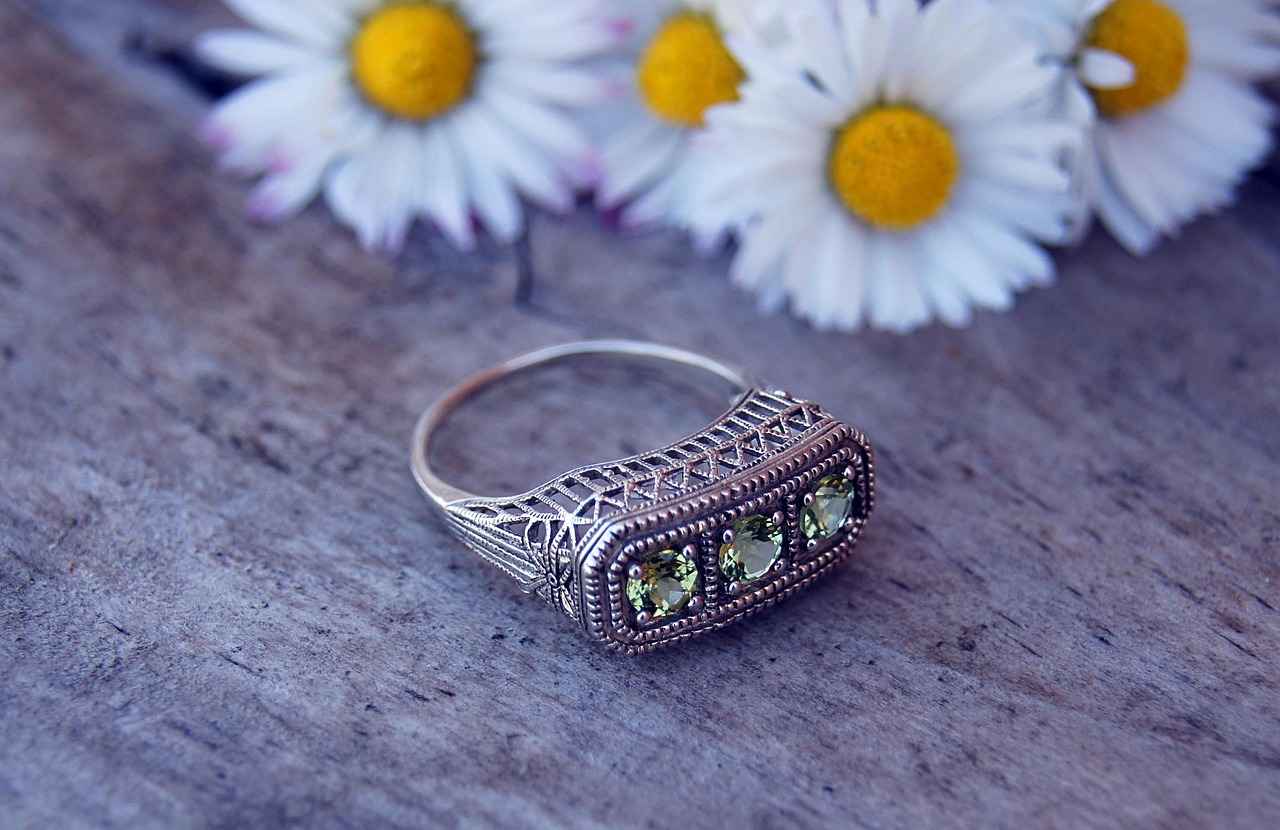
How to Authenticate Jewelry?
When it comes to investing in jewelry, the authenticity of each piece is paramount. Without proper authentication, you risk purchasing items that may not hold their value or, worse, are outright fakes. Understanding how to authenticate jewelry not only protects your investment but also ensures that you are acquiring genuine and valuable pieces.
The jewelry market is rife with imitations and counterfeit items. Authenticity serves as a safeguard, ensuring that you are investing in pieces that are both genuine and valuable. A well-authenticated piece can appreciate over time, making it a wise investment. Moreover, knowing that your jewelry is authentic provides peace of mind, allowing you to enjoy your collection without worry.
- Examine Hallmarks and Stamps: Genuine jewelry often features specific marks that indicate its origin, metal content, and designer. Familiarizing yourself with these hallmarks can be a first step in verifying authenticity.
- Check for Certification: Reputable pieces often come with certificates from respected gemological laboratories. These documents provide detailed information about the piece, including its materials and quality.
- Conduct a Physical Inspection: Inspecting the piece closely can reveal signs of authenticity. Look for quality craftsmanship, weight, and overall finish. High-quality jewelry typically has a heft to it, while fakes may feel lightweight or poorly made.
Identifying counterfeit jewelry is essential for protecting your investment. Here are some common signs to look out for:
- Material Quality: Fake jewelry often uses inferior materials that can tarnish or discolor quickly. Authentic pieces are made from high-quality metals and stones.
- Poor Craftsmanship: Look for irregularities in design, such as uneven settings or rough edges. Genuine jewelry is typically crafted with precision and care.
- Price Point: If a deal seems too good to be true, it probably is. Authentic jewelry often comes at a premium price due to the quality of materials and craftsmanship involved.
Obtaining a certificate from a reputable gemological laboratory adds significant value to your piece. These certificates provide expert evaluation and assurance of a piece’s authenticity. A certified piece not only enhances its resale value but also gives you confidence in your investment.
Many jewelers offer authentication services, but it’s crucial to choose one with a solid reputation. Look for jewelers who are members of recognized organizations, such as the American Gem Society (AGS) or the Gemological Institute of America (GIA). These affiliations often indicate a commitment to quality and integrity.
Educating yourself is perhaps the best defense against counterfeit jewelry. Stay informed about common scams and always purchase from reputable sources. Whether shopping online or in-store, ensure that you do your due diligence. Reading reviews, checking seller ratings, and asking for certificates can significantly reduce your risk of falling victim to counterfeit jewelry.
In conclusion, understanding how to authenticate jewelry is essential for anyone looking to invest wisely. By familiarizing yourself with the signs of authenticity and knowing where to seek assistance, you can confidently build a collection that not only brings joy but also holds its value over time.
Certification and Appraisal
When it comes to investing in jewelry, play pivotal roles in ensuring the quality and authenticity of your pieces. Obtaining certification from reputable gemological laboratories not only provides assurance regarding a piece’s quality but also significantly enhances its investment potential.
Jewelry certification is a formal process where a gemological laboratory evaluates and verifies the characteristics of a gemstone or piece of jewelry. This includes assessments of cut, clarity, color, and carat weight for gemstones, as well as the quality of materials used in the jewelry itself. A certification report acts as a detailed record that can help potential buyers understand what they are investing in.
Investors should prioritize certification for several reasons:
- Assurance of Authenticity: Certification verifies that the piece is genuine and not a counterfeit or imitation.
- Quality Confirmation: Certified pieces are evaluated for their quality, which can significantly influence their market value.
- Increased Resale Value: A certified piece often fetches a higher resale price, as buyers are more confident in the purchase.
Not all certifications are created equal. Here are some tips for selecting a reputable gemological laboratory:
- Accreditation: Look for laboratories that are accredited by recognized organizations, such as the Gemological Institute of America (GIA) or the American Gem Society (AGS).
- Expertise: Ensure that the laboratory employs experienced gemologists who have a solid track record in the industry.
- Transparency: A reputable lab should provide clear and detailed reports that are easy to understand.
Alongside certification, a professional appraisal is crucial. An appraisal provides a monetary value for a piece of jewelry, which is essential for insurance purposes and resale considerations. It typically includes:
- Market Analysis: An assessment of current market trends and how they affect the value of your piece.
- Comparative Pricing: A comparison with similar items in the market to determine a fair value.
- Documentation: A comprehensive report detailing the appraisal process and findings.
It is advisable to have your jewelry appraised every few years or after significant market changes. This ensures you have an up-to-date understanding of its value, especially if you plan to sell or insure the piece.
In conclusion, obtaining certification and professional appraisal from reputable sources is a crucial step in the jewelry investment process. These practices not only offer assurance regarding a piece’s quality and authenticity but also significantly enhance its investment potential. By investing time and resources into understanding these aspects, you can make informed decisions that will benefit your jewelry portfolio in the long run.
Recognizing Fake Jewelry
is a crucial skill for anyone interested in investing in jewelry. With the rise of online shopping and the popularity of vintage and designer pieces, the risk of purchasing counterfeit items has increased significantly. Understanding how to identify fake jewelry can save you from making costly mistakes and ensure that your investments are genuine.
Why is it Important to Identify Fake Jewelry? The jewelry market is filled with both authentic and counterfeit items. Purchasing fake jewelry not only results in financial loss but can also diminish your collection’s overall value. By learning to recognize the signs of counterfeit pieces, you can protect your investments and make informed purchasing decisions.
- Inspect the Materials: Authentic jewelry is often made from high-quality materials. Check for hallmarks or stamps that indicate the metal’s purity, such as “14K” or “925”. If a piece lacks these markings, it may be a fake.
- Examine the Craftsmanship: Genuine jewelry is typically crafted with precision. Look for uneven edges, poor finishes, or loose stones, which may indicate a counterfeit.
- Check the Weight: Authentic jewelry made from precious metals will have a certain weight. If a piece feels unusually light, it may be a sign that it is not genuine.
- Research the Brand: Familiarize yourself with the characteristics of reputable brands. Counterfeit pieces often lack the intricate details and quality that genuine items possess.
What Are Common Signs of Fake Jewelry? Recognizing fake jewelry involves knowing the typical indicators of counterfeits. Here are some common signs to watch for:
- Inconsistent Pricing: If a deal seems too good to be true, it probably is. Be wary of prices that are significantly lower than the market value.
- Missing Documentation: Authentic pieces often come with certificates of authenticity or appraisals. If these documents are absent, question the item’s legitimacy.
- Unusual Packaging: Genuine jewelry is usually packaged in quality boxes or pouches. Cheap or generic packaging can be a red flag.
How Can You Verify Authenticity? If you’re uncertain about a piece’s authenticity, consider the following steps:
- Seek Professional Appraisal: Consulting a certified gemologist can provide you with an expert opinion on the authenticity and value of the piece.
- Use Online Resources: Websites and forums dedicated to jewelry authentication can offer valuable insights and comparisons.
- Ask for Provenance: Requesting the history of the item can help verify its authenticity. Authentic pieces often have a documented history.
In conclusion, being able to recognize fake jewelry is essential for anyone looking to invest in this market. By familiarizing yourself with the common signs of counterfeit items and knowing how to verify authenticity, you can avoid costly mistakes and build a valuable collection. Always prioritize research and professional advice when in doubt to ensure your investments are genuine.
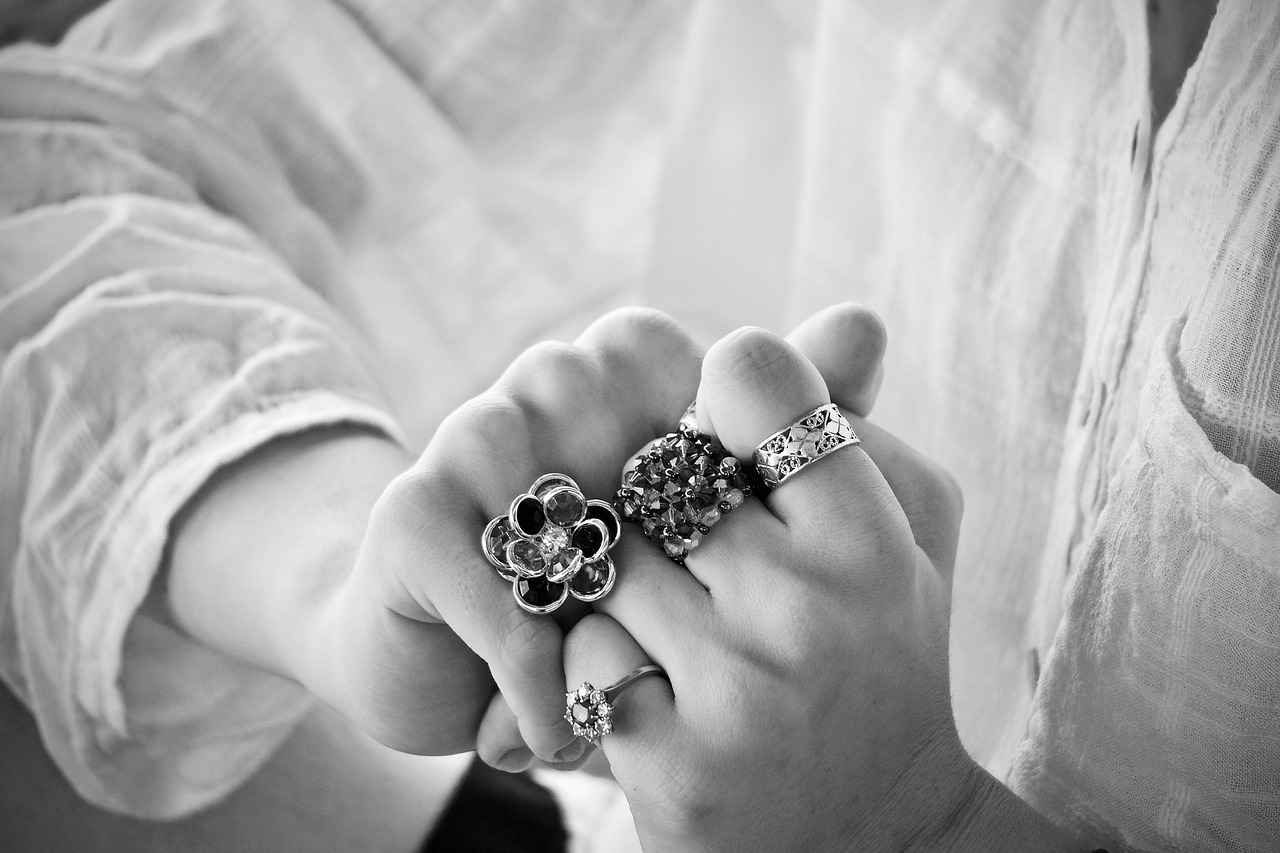
Where to Buy Investment-Worthy Jewelry?
When it comes to investing in jewelry, knowing where to purchase your pieces can significantly influence your overall investment outcomes. With a variety of options available, each choice carries its own set of advantages and disadvantages that can affect the value of your investment.
There are several avenues to explore when looking to buy investment-worthy jewelry. Understanding these options can help you make informed decisions that align with your investment goals.
- Reputable Jewelers: Purchasing from established jewelers is often considered the safest option. These professionals typically provide a level of trust and assurance, ensuring that you are buying authentic pieces. Additionally, they often offer warranties and after-sales services.
- Online Marketplaces: Websites like eBay and Etsy have expanded the jewelry market significantly. While they offer a broader selection, buyers must exercise caution. Researching sellers and reading reviews is essential to avoid counterfeit items.
- Auctions: Auction houses can reveal hidden gems, often featuring unique pieces that are hard to find elsewhere. However, the auction process can be complex, and buyers should be aware of the potential risks, including inflated prices and buyer’s premiums.
- Estate Sales and Vintage Shops: These venues can provide opportunities to acquire vintage and antique jewelry, which often appreciates in value over time. However, authenticity and condition must be carefully assessed.
When selecting where to buy, it is crucial to consider several factors:
- Authenticity: Always verify the authenticity of the jewelry. Look for certifications from reputable gemological laboratories, especially when investing in high-value pieces.
- Investment Potential: Research the types of jewelry that tend to appreciate in value, such as vintage pieces or those made by renowned designers.
- Market Trends: Stay updated on market trends, as they can impact the value of your investment. Factors like fashion cycles and economic conditions play a significant role.
Investing in jewelry can be rewarding, but it is essential to avoid common pitfalls that may lead to poor investment decisions:
- Overpaying: Be cautious of prices that seem too good to be true. Conduct thorough research to understand the fair market value of the pieces you are interested in.
- Neglecting Maintenance: Proper care and maintenance can preserve the value of your jewelry. Neglecting this can lead to depreciation over time.
- Ignoring Resale Value: Consider the resale value of your investment before purchasing. Some pieces may not hold their value, while others may appreciate significantly.
In summary, knowing where to buy investment-worthy jewelry is crucial for maximizing your investment potential. Whether you choose reputable jewelers, online marketplaces, or auction houses, each option presents unique opportunities and challenges. By conducting thorough research and considering factors such as authenticity, investment potential, and market trends, you can make informed decisions that lead to successful jewelry investments.
Reputable Jewelers vs. Online Marketplaces
When it comes to investing in jewelry, the decision of where to purchase your pieces is critical. Understanding the differences between reputable jewelers and online marketplaces can significantly impact your investment experience and outcomes.
Purchasing from established jewelers provides a level of trust and assurance that is often unmatched. These jewelers typically have a long-standing reputation in the industry, which means they are more likely to sell authentic and high-quality pieces. When you buy from a reputable jeweler, you can expect:
- Expert Guidance: Knowledgeable staff can help you understand the value of your investment.
- Quality Assurance: Many jewelers offer guarantees and warranties on their products.
- Authenticity Certificates: Reputable jewelers often provide documentation verifying the authenticity of gemstones and precious metals.
On the other hand, online marketplaces offer a broader selection of jewelry, which can be appealing for investors looking for unique pieces. However, shopping online requires careful scrutiny. Key advantages include:
- Variety: You can find a wide range of styles, materials, and price points.
- Competitive Pricing: Online platforms often have lower prices due to reduced overhead costs.
- Convenience: Shopping from home allows you to browse at your own pace without pressure.
While online marketplaces can be enticing, they come with inherent risks. It is vital to be vigilant when making purchases. Consider the following:
- Authenticity Concerns: Not all sellers provide certificates of authenticity, making it difficult to verify the quality of the piece.
- Return Policies: Some online sellers may have strict return policies, making it challenging to return unsatisfactory items.
- Potential for Counterfeits: The prevalence of counterfeit jewelry on online platforms is a significant risk for investors.
To navigate the jewelry market effectively, whether through reputable jewelers or online platforms, consider the following tips:
- Research: Investigate the seller’s reputation, read reviews, and check ratings.
- Ask Questions: Don’t hesitate to inquire about the piece’s history, materials, and certification.
- Trust Your Instincts: If a deal seems too good to be true, it probably is. Always prioritize quality over price.
In conclusion, both reputable jewelers and online marketplaces have their respective advantages and disadvantages. By understanding these differences, you can make more informed decisions that align with your investment goals. Whether you choose to shop locally or online, the key is to remain vigilant and prioritize authenticity and quality in your jewelry investments.
Auctions: Hidden Gems or Risks?
When it comes to investing in jewelry, auctions can present both opportunities and challenges. Many investors are drawn to auction houses because they offer a chance to acquire unique pieces that may not be available through traditional retail channels. However, navigating the auction landscape requires a clear understanding of the auction process and the potential risks involved.
- Access to Rare Items: Auctions often feature rare and vintage jewelry that can be hard to find elsewhere.
- Competitive Pricing: Depending on demand, you may be able to purchase items at a lower price than retail.
- Investment Potential: Unique pieces can appreciate significantly in value, making them attractive for investors.
While the benefits can be enticing, there are several risks associated with buying jewelry at auctions:
- Authenticity Concerns: Not all auction houses guarantee the authenticity of items, so it is crucial to do your due diligence.
- Condition of Pieces: Jewelry sold at auctions may have undisclosed flaws or damage that can affect its value.
- Emotional Bidding: The excitement of bidding can lead to impulsive decisions, resulting in overpaying for a piece.
Preparation is key to successful auction participation. Here are some steps to consider:
- Research the Auction House: Ensure that the auction house has a reputable history and positive reviews from past buyers.
- Examine the Catalog: Review the auction catalog carefully to identify pieces of interest and assess their estimated values.
- Set a Budget: Determine a maximum bid amount before the auction to avoid overspending in the heat of the moment.
Understanding how to evaluate jewelry can significantly enhance your chances of making a wise investment:
- Inspect the Quality: Look for signs of quality craftsmanship, such as the setting, finish, and overall condition of the piece.
- Know the Market Value: Research similar items to gauge the fair market value and avoid overbidding.
- Seek Expert Opinions: If possible, consult with a gemologist or jewelry expert to assess the piece’s value and authenticity.
Winning an auction requires strategic thinking:
- Start Low: Begin bidding at a lower amount to gauge interest and avoid drawing attention to your maximum bid too early.
- Be Patient: Wait for the right moment to place your bid, especially as the auction nears its end.
- Stay Calm: Maintain composure during the auction to make rational decisions rather than emotional ones.
In conclusion, while auctions can indeed be a goldmine for unique jewelry pieces, they require careful consideration and preparation. By understanding the auction process, evaluating pieces effectively, and employing strategic bidding techniques, you can enhance your chances of making successful investments. Always remember that knowledge is your best ally in the world of jewelry auctions.

Market Trends: What to Watch For?
In the world of jewelry investment, staying informed about market trends is essential for making timely and profitable decisions. The jewelry market is influenced by a variety of factors that can shift rapidly, making it crucial for investors to stay ahead of the curve. Understanding these dynamics can significantly enhance your investment strategy.
Market trends provide valuable insights into consumer preferences and demand. By recognizing these trends, investors can identify which pieces are likely to appreciate in value. For instance, fashion trends often dictate what styles are in demand, while economic conditions can influence purchasing power. Additionally, cultural shifts can create new markets for specific types of jewelry, making awareness of these trends vital.
- Fashion Trends: Designers and celebrities often set the tone for what is popular. Staying updated on runway shows and celebrity endorsements can provide clues about upcoming jewelry trends.
- Economic Conditions: The overall economy affects consumer spending. In times of economic uncertainty, luxury items may see a decline in demand, while during prosperous periods, there may be a surge in high-end purchases.
- Cultural Shifts: Changes in societal values and preferences can lead to new trends. For example, the rise of sustainable and ethically sourced jewelry reflects a growing consumer demand for responsible practices.
Jewelry trends can also be seasonal. For instance, during the holiday season, demand for certain types of jewelry, such as engagement rings and festive accessories, typically increases. Understanding these seasonal patterns can help investors time their purchases and sales effectively.
The global economy plays a significant role in the jewelry market. Factors such as inflation rates, currency fluctuations, and international trade agreements can impact the prices of precious metals and gemstones. Keeping an eye on these economic indicators can help investors make more informed decisions about when to buy or sell their jewelry pieces.
To effectively monitor market trends, investors can utilize various resources:
- Industry Reports: Regularly reading reports from reputable market research firms can provide insights into emerging trends and shifts in consumer behavior.
- Social Media: Following jewelry influencers and brands on platforms like Instagram and Pinterest can help investors gauge what styles are gaining popularity.
- Trade Shows: Attending jewelry trade shows can offer firsthand exposure to new designs and innovations in the market.
In conclusion, being aware of market trends is crucial for anyone looking to invest in jewelry. By understanding the factors that influence these trends, investors can make more strategic decisions that align with consumer demand and economic conditions. Whether it’s keeping an eye on fashion movements or understanding the economic landscape, staying informed will enhance your ability to make profitable investments in the jewelry market.
Seasonal Trends and Their Impact
Understanding the seasonal trends in jewelry is essential for anyone looking to invest wisely. These trends are influenced by various factors, including fashion cycles, cultural events, and even economic conditions. By keeping an eye on these shifts, investors can make more informed decisions that align with consumer demand.
Jewelry trends are not static; they evolve with the seasons. For instance, during the spring and summer months, lighter, more colorful pieces often gain popularity. Bright gemstones and floral designs tend to attract buyers looking for something fresh and vibrant. Conversely, in the fall and winter, darker hues and more substantial pieces, such as statement necklaces or intricate earrings, often come to the forefront. Understanding these patterns can help investors identify which types of jewelry are likely to see increased demand at different times of the year.
Anticipating demand is crucial for making strategic investment choices. By recognizing which styles and materials are trending, investors can acquire pieces that are more likely to appreciate in value. For example, if a particular gemstone is forecasted to be popular in the upcoming season, investing in jewelry featuring that stone could yield significant returns. This foresight allows investors to capitalize on trends before they become mainstream.
- Follow Fashion Weeks: Major fashion weeks around the world often set the tone for upcoming jewelry trends.
- Subscribe to Industry Publications: Magazines and online platforms dedicated to jewelry and fashion provide insights into emerging trends.
- Engage with Social Media: Platforms like Instagram and Pinterest are great for spotting what influencers and designers are promoting.
- Attend Trade Shows: Jewelry trade shows offer a firsthand look at what’s coming in the market.
The broader economic landscape can also influence jewelry trends. During times of economic prosperity, consumers are more likely to invest in luxury items, including high-end jewelry. Conversely, in times of economic downturn, there may be a shift towards more affordable, everyday pieces. Understanding these economic indicators can provide valuable insights into future trends, allowing investors to adjust their strategies accordingly.
Failing to pay attention to seasonal trends can lead to poor investment choices. For instance, investing heavily in a style that is out of season may result in decreased demand, making it challenging to sell those pieces later. Additionally, ignoring market signals can mean missing out on valuable opportunities to invest in trending items that could appreciate in value.
In summary, being aware of seasonal trends and their impact on the jewelry market is vital for any investor. By understanding how these trends evolve and the factors that influence them, investors can make more informed decisions, ultimately leading to more profitable outcomes. Keeping a pulse on the market through research and engagement will enable investors to navigate the dynamic world of jewelry effectively.
Global Economic Factors
In the world of jewelry investment, play a crucial role. The jewelry market is not isolated; it is deeply intertwined with the broader economic landscape. Understanding these factors can provide valuable insights for investors looking to navigate potential risks and rewards.
The demand for jewelry often fluctuates with economic conditions. During periods of economic growth, consumers are more likely to spend on luxury items, including jewelry. Conversely, in times of economic downturn, discretionary spending typically decreases, which can lead to a decline in jewelry sales. Investors should monitor economic indicators such as GDP growth, unemployment rates, and consumer confidence to gauge potential market shifts.
Inflation can significantly affect the jewelry market. As the cost of living increases, the value of currency may decline, leading investors to seek tangible assets like jewelry as a hedge against inflation. Precious metals, in particular, often see increased demand during inflationary periods, as they are perceived as a safe store of value. Investors should consider how inflation trends could impact their jewelry investments.
Jewelry prices are also influenced by currency fluctuations. Since precious metals and gemstones are traded globally, changes in currency values can affect their pricing. For instance, a weaker domestic currency may increase the cost of imported materials, leading to higher retail prices for jewelry. Investors should keep an eye on currency trends and their potential impact on jewelry valuations.
Global events, such as political instability, natural disasters, or pandemics, can create uncertainty in the market, affecting consumer behavior and investment sentiment. For example, the COVID-19 pandemic led to significant disruptions in supply chains and a shift in consumer priorities, impacting jewelry sales. Investors should remain vigilant about global news and events that could influence market dynamics.
- Diversification: Investors should consider diversifying their jewelry portfolios to include various types of pieces, such as vintage, designer, and gemstone-encrusted items. This can help spread risk and enhance potential returns.
- Research: Staying informed about market trends and economic indicators is essential. Regularly reviewing reports from reputable sources can provide insights into market conditions.
- Long-term Perspective: Jewelry investment should be viewed as a long-term commitment. Short-term market fluctuations may occur, but historically, valuable pieces tend to appreciate over time.
In summary, understanding global economic factors is vital for anyone looking to invest in jewelry. By keeping abreast of economic conditions, inflation trends, currency fluctuations, and global events, investors can make informed decisions that align with their financial goals. The jewelry market offers unique opportunities, but it requires careful analysis and strategic planning to navigate its complexities successfully.
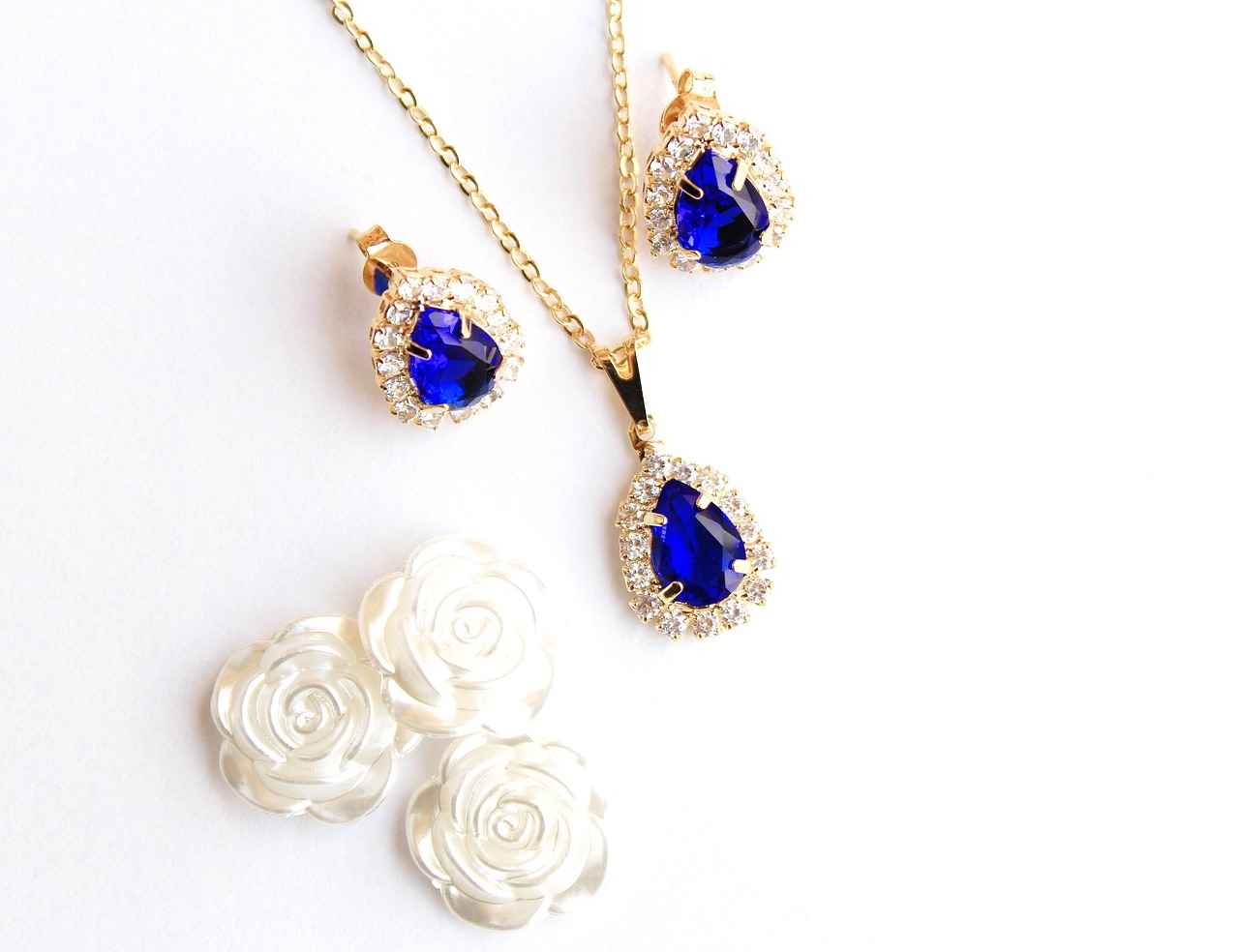
How to Maintain and Care for Your Jewelry Investments?
Investing in jewelry is not just about purchasing beautiful pieces; it also involves understanding how to maintain their value over time. Proper care and maintenance can significantly extend the life of your jewelry investments, ensuring they remain as stunning as the day you bought them. In this section, we will explore essential tips for storing, cleaning, and caring for your jewelry to maximize its longevity and value.
Jewelry often represents a considerable financial investment, making maintenance critical. Neglecting proper care can lead to damage, tarnishing, or loss of value. By investing time in maintenance, you can:
- Preserve Aesthetic Appeal: Regular cleaning keeps your pieces sparkling and visually appealing.
- Prevent Damage: Proper storage and handling reduce the risk of scratches, breakage, or loss.
- Enhance Value: Well-maintained jewelry tends to retain its market value better than neglected pieces.
Storing your jewelry correctly is essential to prevent damage and tangling. Here are some effective storage solutions:
- Use Individual Pouches: Store each piece in its own soft pouch to prevent scratches and tangles.
- Jewelry Boxes: Invest in a quality jewelry box with compartments to keep items organized and secure.
- Avoid Humidity: Store your jewelry in a cool, dry place, as humidity can cause tarnishing, especially in silver.
Regular cleaning is vital for maintaining the brilliance of your jewelry. Here are some effective cleaning methods:
- Gentle Soap and Water: For most jewelry, a mixture of mild soap and warm water is sufficient. Soak the piece for a few minutes, then gently scrub with a soft brush.
- Professional Cleaning: For valuable pieces, consider professional cleaning and inspection at least once a year to ensure they remain in top condition.
- Avoid Harsh Chemicals: Stay away from bleach or ammonia-based cleaners, as they can damage the metals and stones.
Conducting regular inspections of your jewelry can help identify potential issues before they become serious problems. Check for:
- Loose Stones: Ensure that gemstones are securely set to prevent loss.
- Worn Settings: Look for signs of wear on the settings, which may need repair.
- Tarnishing: Regularly assess for tarnishing, especially on silver pieces, to address it promptly.
To further enhance the longevity of your jewelry investments, consider these expert tips:
- Remove Before Activities: Always take off your jewelry before engaging in activities such as exercising, swimming, or cleaning to prevent damage.
- Keep Away from Perfumes: Apply perfumes and lotions before putting on jewelry, as chemicals can cause tarnishing.
- Store Separately: Avoid storing different types of jewelry together, as harder materials can scratch softer ones.
By following these maintenance and care tips, you can ensure that your jewelry investments remain beautiful and valuable for years to come. Remember, the time and effort you invest in caring for your pieces will pay off in the long run, preserving both their aesthetic and financial value.
Storage Solutions for Jewelry
When it comes to investing in jewelry, proper storage solutions are essential for maintaining the integrity and value of your pieces. Storing jewelry correctly can prevent damage and ensure that your investments remain in excellent condition. Here, we delve into effective storage methods and tips to keep your jewelry safe.
Jewelry can be delicate and susceptible to various forms of damage, such as scratches, tarnishing, and even loss. By utilizing appropriate storage techniques, you can significantly reduce these risks. Proper storage not only protects your jewelry but also helps in preserving its monetary value and aesthetic appeal.
- Jewelry Boxes: Invest in a quality jewelry box with compartments to separate different pieces. This prevents tangling and scratching. Look for boxes lined with soft fabric to cushion your items.
- Anti-Tarnish Pouches: For silver jewelry, consider using anti-tarnish pouches or cloths. These materials help to minimize exposure to air and moisture, which can cause tarnishing.
- Drawer Organizers: If you prefer to store jewelry in a drawer, use organizers to keep items separated. This method is particularly useful for larger collections.
- Display Cases: For those who want to showcase their jewelry, display cases with glass tops can be an excellent choice. Ensure they are kept in a controlled environment to avoid dust and humidity.
When storing your jewelry, it’s crucial to consider the environment. Jewelry should be kept in a cool, dry place, away from direct sunlight and humidity. Excessive heat can warp materials, while moisture can lead to tarnishing and corrosion. A stable environment will help maintain the quality of your pieces.
Organization plays a vital role in maintaining your jewelry collection. Here are some tips:
- Sort by Type: Group similar pieces together, such as rings, necklaces, and bracelets. This makes it easier to find what you need.
- Use Labels: For larger collections, consider labeling boxes or drawers. This can save time and prevent rummaging through multiple items.
- Regularly Review: Periodically assess your collection to determine if any items need cleaning or repairs. This keeps your jewelry in top condition.
In addition to proper storage, regular maintenance is key to preserving the beauty and value of your jewelry. Here are some essential care tips:
- Clean Regularly: Use appropriate cleaning methods for different materials. For example, a soft cloth can be used for gold, while specialized cleaners are recommended for gemstones.
- Avoid Wearing While Active: Remove jewelry before engaging in physical activities to prevent damage from impacts or exposure to harsh chemicals.
- Check Settings and Clasps: Regularly inspect your jewelry for loose stones or damaged clasps. Early detection can prevent loss and costly repairs.
By adopting these storage solutions and care practices, you can ensure your jewelry remains safe and retains its value over time. Proper storage not only protects your investments but also enhances your enjoyment of these beautiful pieces.
Cleaning and Maintenance Tips
When it comes to maintaining the beauty and value of your jewelry, cleaning and maintenance are essential practices. Regular care not only enhances the appearance of your pieces but also extends their lifespan, ensuring that your investments remain in excellent condition for years to come. Here are some practical tips to help you keep your jewelry looking its best.
Over time, jewelry can accumulate dirt, oils, and residue from daily wear. This buildup can dull the shine of your pieces and, in some cases, even damage the materials. Regular cleaning helps to:
- Maintain luster and brilliance.
- Prevent the degradation of materials.
- Spot early signs of damage or wear.
Different materials require different cleaning methods. Here’s how to clean some common types of jewelry:
- Gold Jewelry: Use a mixture of warm water and mild dish soap. Soak your gold pieces for about 15 minutes, then gently scrub with a soft brush. Rinse and dry with a soft cloth.
- Silver Jewelry: Silver can tarnish over time. Use a silver polishing cloth to remove tarnish, or create a paste of baking soda and water for deeper cleaning. Apply with a soft cloth, then rinse thoroughly.
- Gemstone Jewelry: Always check the care instructions for specific gemstones. For most, a gentle soap solution and a soft brush will suffice. Avoid harsh chemicals that can damage the stone.
In addition to regular cleaning, consider these maintenance practices:
- Storage: Store your jewelry in a cool, dry place, ideally in a lined jewelry box or separate pouches to prevent scratching.
- Avoid Exposure: Keep your jewelry away from harsh chemicals, such as those found in cleaning products, perfumes, and lotions, as they can cause damage.
- Professional Cleaning: For valuable pieces or intricate designs, consider having your jewelry professionally cleaned and inspected at least once a year.
While caring for your jewelry, avoid these common pitfalls:
- Using Abrasive Cleaners: Harsh chemicals or abrasive materials can scratch or damage your jewelry.
- Wearing Jewelry During Activities: Remove your jewelry before exercising, swimming, or engaging in activities that could cause damage.
- Neglecting Repairs: Address any repairs promptly. Loose stones or broken clasps can lead to further damage if left unattended.
By incorporating these into your routine, you can ensure that your jewelry not only looks stunning but also retains its value over time. Remember, investing in your jewelry’s care is just as important as the initial investment itself. With proper attention, your pieces can remain cherished treasures for generations.
Frequently Asked Questions
- What is the best type of jewelry to invest in?
When it comes to investment-worthy jewelry, vintage pieces, designer items, and those featuring precious stones are often the most valuable. These types tend to hold or even increase in value over time, making them great options for new investors.
- How can I authenticate jewelry before purchasing?
To ensure you’re buying genuine jewelry, look for certification from reputable gemological laboratories. This certification confirms the quality and authenticity of the piece, which is crucial for protecting your investment.
- Where should I buy jewelry for investment purposes?
Purchasing from established jewelers is generally safer as they offer a level of trust and assurance. However, online marketplaces can provide a broader selection, but you must be cautious and do your research to avoid counterfeit items.
- How can I stay updated on jewelry market trends?
Keeping an eye on fashion trends, economic conditions, and cultural shifts can help you stay informed about jewelry market trends. This knowledge allows you to make timely investment decisions and anticipate demand.
- What are some tips for maintaining my jewelry investments?
Proper storage and regular cleaning are essential for maintaining the value of your jewelry. Use specific storage solutions to prevent damage and follow simple cleaning practices to enhance the appearance and longevity of your pieces.
